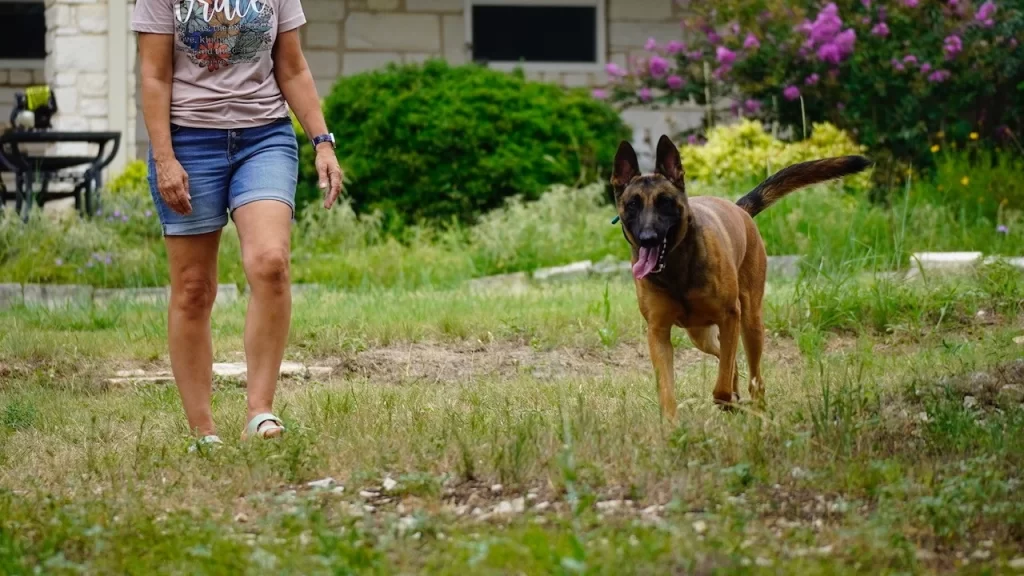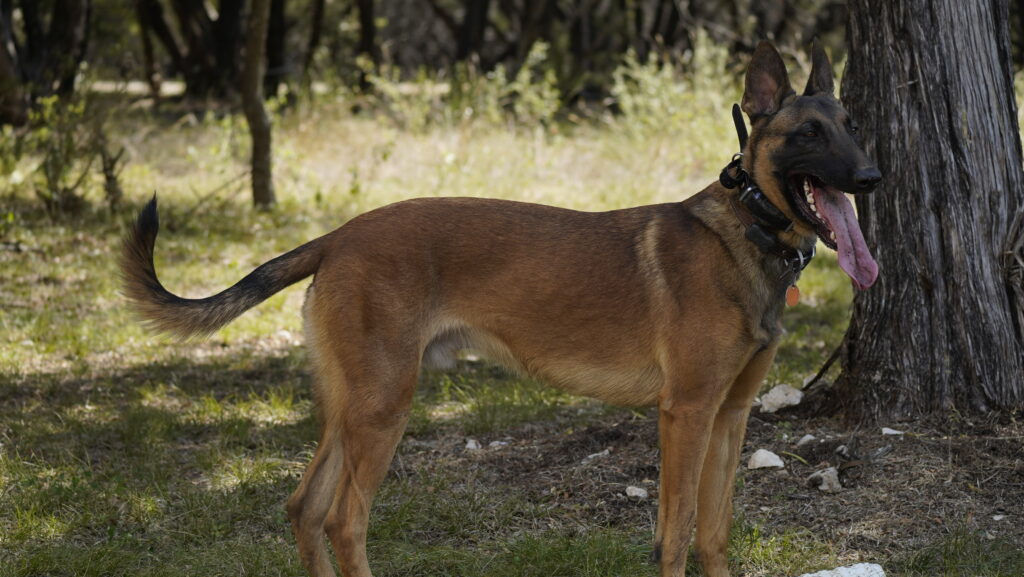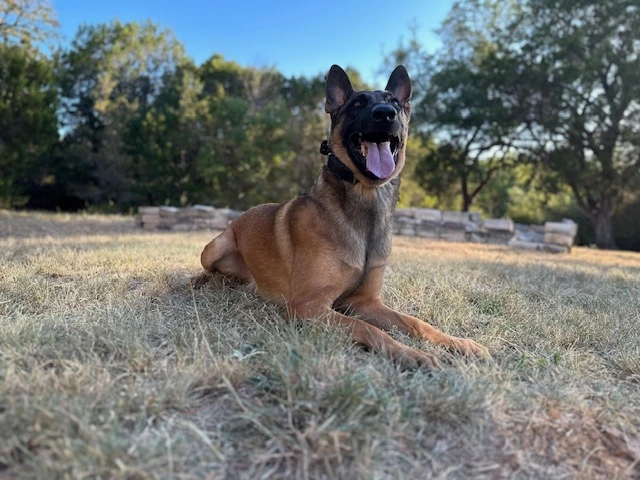How Protection Dogs for Sale Can Save You
Owning a protection dog can offer peace of mind and security for your family and home. In this article, we will discuss the benefits of owning a protection dog and how to find the right one for you.

A protection dog is a dog that has been specifically trained to provide security for its owner. These dogs can be used for personal protection or as guard dogs for businesses and homes. Protection dogs can provide a number of advantages for their owners, including:
-Peace of mind knowing that you and your loved ones are protected
-Increased security for your home or business
-Reduced risk of crime or violence
-Ability to deter intruders or attackers
-Added safety during travel
What is a Protection Dog?
Protection dogs are specially trained canines that are trained to protect their owners from harm. They are not your typical pets, but rather highly trained animals that can be a lifesaver in an emergency. Protection dogs are often trained to respond to specific commands and to detect potential danger, making them a valuable asset for families looking to increase their security.

Training a protection dog requires both time and effort. It can be done at home, but professional training is often recommended for best results. When training a protection dog at home, it is essential to establish clear boundaries and rules to ensure consistent training.
Alternatively, professional dog training is an option for those wanting to ensure their protection dog receives proper instruction. Professional trainers typically use their expertise to train dogs on detecting threats, obedience, and handling aggression.
There are several ways to find protection dogs for sale, but it can be challenging to ensure the breeder is reputable. It is recommendable to research and ask for referrals, and find a breeder that has a reputation for producing high-quality protection dogs. When contacting the breeder, be sure to ask questions about the dog’s pedigree, training, and behavior.
Once you have found a reputable breeder and selected a protection dog, introducing them to your family can be a challenge. However, there are specific rules that should be followed to ensure successful integration. It is paramount to establish boundaries and rules, such as not letting the dog on the furniture and not allowing them in specific areas of the house.
Characteristics of a Protection Dog
Protection dogs, also known as guardian dogs, are carefully selected and trained to act as a guardian and protector for their owners and their property. There are a few key characteristics that make a great protection dog:
1. Loyalty: Protection dogs are incredibly loyal to their owners and are willing to do whatever it takes to protect them from harm. They are always on the lookout for potential threats and will act quickly and decisively to neutralize any danger.
2. Intelligence: Protection dogs are highly intelligent and can quickly learn complex commands and strategies. They are able to assess situations and react accordingly, making them an excellent choice for protection.
3. Fearlessness: Protection dogs must be fearless when it comes to threats. They do not back down in the face of danger and will protect their owners at all costs.
4. Physical Skills: Protection dogs are usually large and muscular with strong jaws and sharp teeth. They are trained to use their physical strength to restrain and neutralize threats.
Advantages of Owning a Protection Dog
A protection dog is a highly trained and well-disciplined canine that is capable of ensuring the safety and security of its family. They are incredibly loyal and brave, and their instincts are primarily focused on protecting their owners. Here are some advantages of owning a protection dog:
– Protection: The most notable advantage of owning a protection dog is the level of security they provide to their owners. These dogs are trained to defend their family against potential threats, including intruders and attackers. They can sense danger and act accordingly to protect their family.
– Peace of Mind: Having a protection dog in your home gives you peace of mind knowing that you and your family are safe. You can sleep soundly, knowing that your furry companion is keeping watch throughout the night.
– Reduced Insurance Premiums: Some insurance companies offer reduced rates to homeowners who own a protection dog. This is because these dogs are an effective security measure that can prevent break-ins and thefts.
– Companionship: Protection dogs also provide companionship and comfort to their owners. They are incredibly loyal and affectionate, and their presence can alleviate stress and anxiety.
– Training: The training process involved in owning a protection dog can be incredibly rewarding. It allows you to bond with your dog and develop a deeper level of trust and respect.
Training a Protection Dog
Training a protection dog is a crucial step in ensuring the safety of your family. From basic obedience training to advanced defensive tactics, a protection dog must be highly trained to provide the necessary protection. There are two main options when it comes to training a protection dog: training at home or professional training. Training a protection dog at home can be cost-effective, but it requires a lot of time and dedication. Professional training is more expensive, but it provides a comprehensive training program that is necessary to develop a top-tier protection dog. It is important to research and choose a reputable trainer or training program to ensure the best possible outcome for your protection dog.

Training a Protection Dog at Home
Training a protection dog at home can be a cost-effective way of teaching your furry friend the necessary skills to protect your family. However, it is important to keep in mind that it is not an easy task and requires a lot of patience and consistency. Here are some tips for training a protection dog at home:
– Socialization: Socializing your dog with different people, pets, and situations is crucial for a protection dog. This will teach them to differentiate between potential threats and non-threats, making them more effective protectors of your family.
– Obedience training: Obedience training is the foundation of training a protection dog. Start with basic commands such as sit, stay, and come. Once your dog has mastered these, you can move on to more advanced commands like heel and watch.
– Bite work training: This is the most important aspect of training a protection dog. However, it should only be attempted by experienced trainers. Teach your dog to bark and then attack on command, but only when a real threat is present.
– Realistic training scenarios: Train your protection dog in realistic scenarios that mimic potential threats. This will help your dog to be prepared in case of a real emergency.
Professional Training for a Protection Dog
Professional training for a protection dog may be necessary to ensure that your dog is properly trained and capable of effectively protecting your family. Professional trainers are skilled in teaching your dog obedience, self-control, and defensive tactics, such as bite work. They also work on teaching your dog to recognize threatening situations and react appropriately according to your commands. Trainers focus on shaping the dog’s natural instincts while developing the dog’s capacity to recognize danger and make good decisions on their own.
The trainers use a combination of positive and negative reinforcement to instill good behavior in your canine protector. They begin by teaching basic obedience and gradually move on to advanced training techniques, including scent tracking, agility training, and protection work. These professionals will also train you on how to command and control your dog, to ensure that you can confidently instruct your dog when it comes to protecting your family.
When considering a professional trainer, be sure to do your research to find someone who is reputable, experienced, and utilizes positive reinforcement techniques. Look for trainers who have extensive experience working with protection dogs and have a strong understanding of dog behavior. It’s also crucial to select a trainer that incorporates your family’s needs and specific circumstances into the training program.


Finding Protection Dogs for Sale
When it comes to finding protection dogs for sale, there are a few important factors to consider. First and foremost, it’s crucial to find reputable breeders who specialize in breeding and training protection dogs. This will ensure that your dog has undergone extensive training and socialization to become an effective guardian for your family. When looking for a breeder, it’s important to ask about their training methods, certifications, and experience. It’s also a good idea to ask for references or testimonials from previous customers to ensure their satisfaction.

Once you have found a reputable breeder, it’s important to ask them about the individual temperament of the dog you are considering. Some protection dogs may be better suited for families with children, while others may have a higher drive and require more experienced handlers. Additionally, it’s important to consider the cost of the dog and any ongoing training and maintenance expenses.
Investing in a protection dog can provide peace of mind and added security for your family. As one expert in the protection dog industry stated, “A protection dog is not just a pet, it’s an investment in the safety of your family and property.” With proper training, a protection dog can become a loyal companion and effective deterrent against potential threats.
Reputable Breeders of Protection Dogs
If you’re in the market for a protection dog, it’s important to find a reputable breeder. A reputable breeder takes the time and care to breed dogs with desirable characteristics, including intelligence, trainability, and temperament. When looking for protection dogs for sale, consider the following tips for finding a reputable breeder:
1. Look for breeders who specialize in protection dogs: A breeder who specializes in protection dogs is more likely to have experience with the breed and be knowledgeable about their temperament and training needs.
2. Ask for references: A reputable breeder should be willing to provide references from previous clients. Reach out to these references and ask about their experience with the breeder.
3. Visit the breeder: Visiting the breeder in person allows you to see the living conditions of the dogs and ask any questions you may have. It’s also a great opportunity to meet the dogs themselves and get a sense of their temperament.
4. Do your research: Check the breeder’s reputation online and look for any red flags. Ask the breeder about any health issues the dogs may have and ask to see documentation of any necessary vaccinations or tests.
Finding a reputable breeder can help ensure that you end up with a healthy and well-trained protection dog that will keep your family safe.
Questions to Ask the Breeder
If you’re considering purchasing a protection dog from a breeder, it’s important to ask them the right questions to ensure the dog you’re getting is the right fit for your family. Here are some key questions to ask when searching for protection dogs for sale:
1. What breeds do you specialize in breeding for protection work?
2. Can you provide me with the dog’s pedigree and information about the dog’s parents and lineage?
3. Can you tell me about the dog’s previous training and/or experience in protection work?
4. What kind of health screenings and vet care does the dog receive?
5. Can you provide me with references from previous customers who have purchased protection dogs from you?
It’s important to find a reputable breeder who specializes in breeding protection dogs and has a track record of producing healthy, well-trained dogs. By asking these questions, you can ensure you’re getting a top-quality dog that will fit in well with your family and provide the protection you need.
Protecting Your Family with Protection Dogs
When it comes to protecting your family, a protection dog can provide an added layer of security. These specially trained dogs are able to detect threats and defend their owners when necessary. However, it’s important to understand that the training process for a protection dog is extensive and could take several months to complete.

It’s crucial to introduce your protection dog to your family members properly to ensure a smooth transition. It’s essential to provide a welcoming environment and include every member of the family in the introduction process. Family members should be calm, and quiet, and let the dog take its time to get comfortable.
There are important rules to follow when it comes to owning a protection dog. These include providing the dog with enough exercise and stimulation, keeping the dog on a leash in public, and ensuring that the dog is trained to only respond to specific commands. It’s important to remember that a protection dog is still a dog, and obedience training is just as important as protection training.
How to Introduce a Protection Dogs to Your Family
Introducing a protection dog to your family can be an exciting and nerve-wracking experience at the same time. Here are some tips to help make the introduction a positive one:
1. Take it Slow: Allow your family members to get to know the protection dog slowly. Don’t force the dog to interact with them immediately.
2. Set boundaries: It’s important to establish boundaries early on. Let your family know what the dog is allowed to do and what is off-limits.
3. Be Consistent: Consistency is key when it comes to building trust between the dog and your family. Make sure everyone follows the same rules and uses the same commands.
4. Get Everyone Involved: Encourage your family members to participate in the training process. This will help to build a strong bond between the dog and your family.
5. Reward Good Behavior: Rewarding good behavior is important for reinforcing positive habits. Make sure to praise and reward your dog for good behavior.
Rules to Follow with Protection Dogs
When it comes to owning a protection dog, it’s important to establish rules and guidelines to ensure the safety of both the dog and its human family members. Here are some key rules to follow:
1. Keep the dog on a leash or in a secured area – A protection dog is trained to be vigilant and protective, so it’s important to keep them under control in public spaces to avoid any potential dangers or accidents.
2. Supervise interactions with strangers – While protection dogs are trained to protect their families, they may not be as friendly toward strangers. It’s important to supervise any interactions your protection dog has with people they’re not familiar with to avoid any potential issues.
3. Provide proper exercise and mental stimulation – Protection dogs require plenty of physical and mental stimulation to remain well-behaved and happy. Make sure to provide regular exercise and mental stimulation to keep your protection dog healthy and content.
4. Stay up to date on vaccinations and vet visits – As with any pet, it’s important to keep your protection dog up to date on vaccinations and veterinary check-ups to ensure their health and well-being.
5. Continue training and socialization – Training and socialization are key to maintaining a well-adjusted and well-behaved protection dog. Keep up with continuing education and socialization to ensure your protection dog is always at their best.

